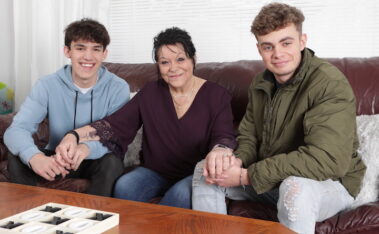What We Do
The ACT Foundation is an award-winning national charitable organization that is establishing free CPR and AED programs in Canadian high schools. The ACT High School CPR Program is built on ACT’s community-based model of partnerships and support, whereby CPR training mannequins and AED training units are donated to schools and teachers are trained (Train the Trainer model) to teach all students. Schools take ownership and maintain the program as it enters the realm of a national standard by our education system. The program is seeing youth across the country empowered with lifesaving skills and knowledge they take to their present and future families and communities. Many lives are being saved. Canada is a world leader in high school CPR.
Teacher Updates
Video teaches recognition of SCA in athletes
All physical education and health teachers, coaches, and all who work in athletics should see this powerful 2-minute video by Dr. Jon Drezner.
Safety protocols for teaching Compression–Only CPR
The Heart and Stroke Foundation’s safety protocols for teaching Compression-Only CPR (also known as Hands-Only CPR) during COVID-19
Award Nominations
Rescue Stories
Youth and teachers who have been trained through the ACT High School CPR and AED Program are stepping forward and using their lifesaving skills in a wide range of emergencies involving family, friends, and strangers. Many lives are being saved.
Countless Lives Saved

Student's heroic CPR saves his friend's life
Lennox swiftly remembered the CPR and AED training they had both received through the ACT High School CPR and AED Program at Pemberton Secondary School two years earlier

Family saves father’s life with CPR
Madeleine, 15, was trained through the ACT High School CPR and AED Program, which aims to see all students empowered to save lives

Best friends step up to save woman with CPR
Tyler and Levi were trained in the ACT High School CPR and AED Program and knew what to do
Our Impact Across Canada
The ACT Foundation has established the High School CPR Program in over 1,800 high schools across Canada, and is now enhancing the CPR Program with AED training.
Get ACT in Your School
Students learn the 4 ‘Rs’ of CPR: RISK factors for heart disease and stroke, and the importance of a heart-healthy lifestyle; how to RECOGNIZE the warning signs of a heart attack, stroke, or other developing emergency; how to REACT; and the hands-on skill of CPR, how to use a defibrillator, and the airway obstruction manoeuvre – RESUSCITATION. Schools own the program. High school teachers teach. Mannequins come from the community. Schools maintain over the long term. It is easy to set up and easy to maintain.
Contact the ACT Foundation to find out how.
Become a Partner
The ACT High School CPR and AED Program is built on an award-winning, community-based model of partnerships and support, whereby ACT finds local partners who donate training mannequins, AED training units, teacher training, and AEDs to schools.
For partnership opportunities and to learn how your organization can promote health and wellness, empower youth to save lives, and support the health of Canadian communities, contact us.
Our National Health Partners

ACT in the News
Celebrating Heart Month and launch of Opioid Overdose Response Training in Thunder Bay high schools
Hydro One joined the ACT Foundation and its partners at Superior Collegiate and Vocational Institute to celebrate Heart Month by introducing lifesaving Opioid Overdose Response Training in all Thunder Bay high schools as part of the ACT High School CPR and AED Program
Celebrating CPR Month and 3 million Ontario students trained to save lives
Hydro One joined the ACT Foundation and its partners at Notre Dame College School to celebrate CPR Month and the incredible milestone of three million students trained in CPR and how to use an automated external defibrillator (AED) to date in Ontario
Thunder Bay teen honoured for saving father’s life with CPR
Madeleine was trained through the ACT High School CPR and AED Program, which aims to see all students empowered to save lives
Hydro One and the ACT Foundation present Rescuer Awards to two Sudbury teenagers for their bravery and side-of-the-road heroics
Best friends use CPR skills to save the life of a Sudbury woman who suffered from cardiac arrest
Hydro One provides support to the ACT Foundation to expand the new Opioid Overdose Response Training to 80 per cent of Ontario high schools
New data reveals that only 18 per cent of Ontarians are confident they could help someone experiencing a suspected opioid overdose
Government of Canada announces $20 million to help communities respond to increasing opioid-related overdoses
Projects will provide training and awareness on opioid overdose response to 2.4 million Canadians and enable the distribution of 58,000 naloxone kits.





